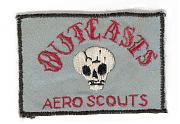Which ones were the "raw cannon fodder divisions" that were "chewed up" ?
2nd Armored
3rd Armored
5th Armored
7th Armored
8th Armored
2nd Infantry
8th Infantry
28th Infantry
29th Infantry
30th Infantry
35th Infantry
78th Infantry
79th Infantry
83rd Infantry
84th Infantry
95th Infantry
102nd Infantry
104th Infantry
Show and Tell Facts Time.
Regards
Mike












Bookmarks